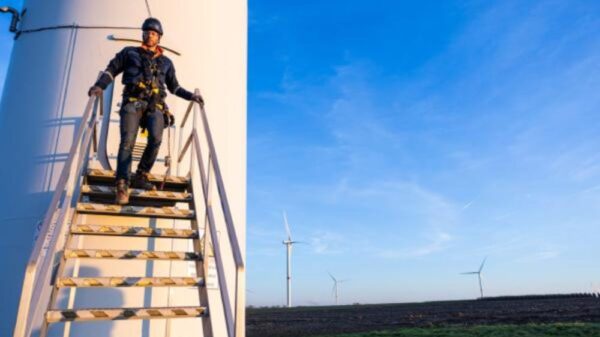As the famous theory of “China’s imminent collapse” has finally lost its force, the continued reluctance of some politicians, academics and media to recognize China’s long-term resilience has coined a new phrase: “end of Chinese growth” – writes Chinese economic expert Mr YI Da.
Every independent spirit rejects blind conformism. So, let’s take a close look at the most erroneous myths that make up this narrative trap.
Myth 1: China’s economic weight will not exceed that of the United States.
Referring to the gap that has widened over the last two years between the two countries in terms of GDP, some conclude a little too quickly that China’s GDP will never exceed that of the United States, without taking into account the current context or the structural differences of the two economies.
Several factors explain the growing gap between Chinese and American GDP, including in particular the depreciation of the renminbi against the dollar. In 2023, Chinese growth was 5.2%, and American growth was 2.5%. And China is well ahead in terms of the real economy, as evidenced by its production of grain, electricity, steel, cement and its shipbuilding industry which are respectively 1.2, 2.3, 19, 20 and 70 times greater than those of the United States which continue to suffer from deindustrialization.
What most proponents of the “end of Chinese growth” fail to understand is that China has never been interested in the idea of “surpassing the United States” in terms of GDP. Its goal is always to surpass itself to make the lives of Chinese people better.
Myth 2: The real estate crisis threatens China’s long-term growth.
Real estate remains one of the pillars of the Chinese economy, especially since projections suggest that over the next decade, 100 million Chinese will migrate to urban areas.
It is true that commercial housing sales have seen a significant decline, but the full boom in private investment and the “new trio” – electric cars, batteries and solar panels which represent an added value of 21,000 billion RMB yuan in 2022 ‒ compensated for the weak growth in the sector. According to estimates from the Finnish Energy and Clean Air Research Center, the clean energy industry is already the main driver of Chinese growth, contributing 40% in 2023.
Less dependence on real estate, more growth based on innovation, the rise of the new manufacturing industry, e-commerce, 5G… These changes highlight the quality of China’s development and its contribution to the global response to climate change, an aspect often drowned out in debates where passion dominates.
Myth 3: Foreign investment is fleeing China.
Contrary to what we often hear, the “decoupling” of the Chinese economy has never been a reality.
In 2023, despite a slight decline, China attracted 1.13 trillion RMB yuan in FDI, the third largest inflow in its history. Western media turned a blind eye to the establishment of 53,766 new foreign-invested companies in China, a jump of 40%, as well as the explosion of investment from developed economies other than the United States, in particular France, Sweden, Germany, Australia and Singapore.
For a more complete picture of the situation, one only needs to look at surveys published by various chambers of commerce, which reveal that 80% of multinationals have expressed a desire to stay in China and even increase their investments. The withdrawal of certain multinationals is due more to the emergence of competitive national companies than to political reasons.
Myth 4: Rising unemployment in China will cause social unrest.
Political scientists say that in general, when the unemployment rate reaches 20%, a country will face social instabilities. This is obviously not the case in China. In 2023, its urban unemployment rate was 5.2%, well below the alert threshold.
Indeed, the fight against unemployment is still at the top of the Chinese government’s agenda. With a population of 1.4 billion and more than 10 million university graduates per year, China must create 12 million jobs each year. To do this, various employment support policies have been put in place, ranging from tax reductions to interest subsidies.
While the recent economic downturn has led to layoffs, job losses will not necessarily translate into social upheaval. Especially if we take into account the new boom in flexible employment in China. With online sales and the streaming economy, the number of self-employed workers has increased significantly. Young people earn their living by singing, speaking and making vlogs on social networks, and thus create new jobs.
Myth 5: China’s ageing population means economic decline.
The first drop in the Chinese population recorded in 2022 has prompted the government to accelerate progress towards an economy adapted to the new demographic reality.
If the ageing of society means a reduction in the workforce, it is not necessarily synonymous with a lack of economic dynamism. China’s response is to highlight, among other things, AI and automation technologies. Social services, which once depended on human labour, are now provided by robots or drones. In addition, a gross enrollment rate in higher education of more than 60% ensures China has qualified skills and a possible upscaling of services.
Furthermore, the construction of the “ageing well” society will also provide added value and jobs. According to estimates, China’s “old age” sector could generate a value of more than 10,000 billion RMB yuan, with an annual growth rate of more than 15%.
Myth 6: The Chinese lack confidence in the future.
In East Asia, including China, the majority of parents invest significantly in their children’s education, hoping to ensure a better future for the next generation. This partly explains intense social competition and is a powerful catalyst for innovation and improvement, as evidenced by China’s progress in space, wide-body aircraft, chips, and ship and automobile manufacturing.
It is true that the complaints of China’s middle class, fueled by the recent slowdown in growth and short-term fluctuations in the financial market, are being heard more often with the flourishing of social media. But the emergence of new problems in China, as the country’s history of reform and opening-up shows, has always been a harbinger of new progress.
China is a nation reluctant to give up in the face of adversity. She always looks to the future, convinced that it will be better. An optimism that embodies the rationality of great people and collective confidence in the long-term resilience of the country.
































